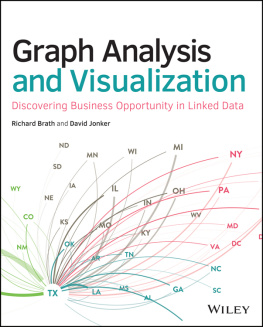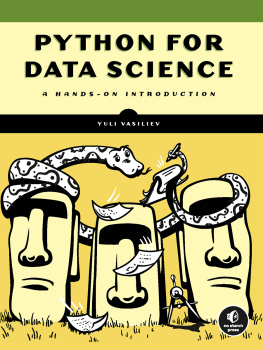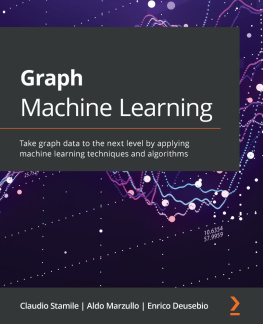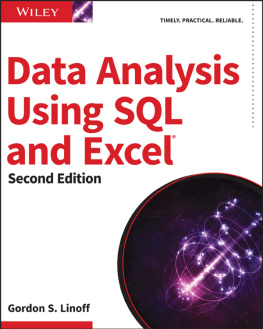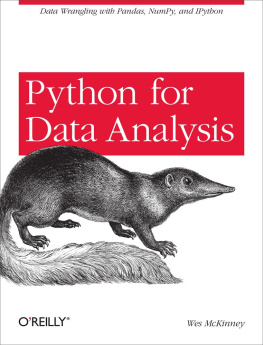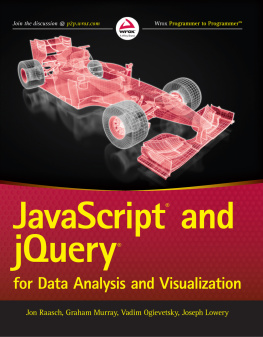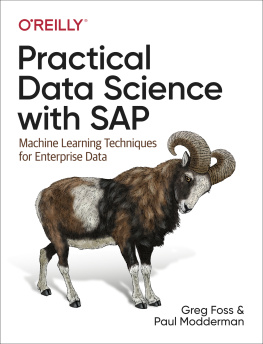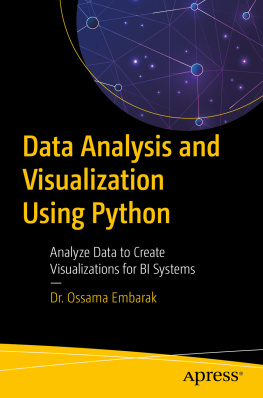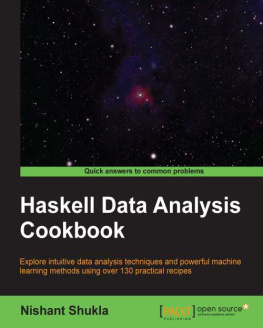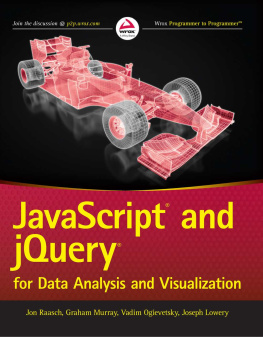
Copyright
Graph Analysis and Visualization: Discovering Business Opportunity in Linked Data
Published by
John Wiley & Sons, Inc.
10475 Crosspoint Boulevard
Indianapolis, IN 46256
www.wiley.com
Copyright 2015 by John Wiley & Sons, Inc., Indianapolis, Indiana
Published simultaneously in Canada
ISBN: 978-1-118-84584-4
ISBN: 978-1-118-84569-1 (ebk)
ISBN: 978-1-118-84587-5 (ebk)
Manufactured in the United States of America
10 9 8 7 6 5 4 3 2 1
No part of this publication may be reproduced, stored in a retrieval system or transmitted in any form or by any means, electronic, mechanical, photocopying, recording, scanning or otherwise, except as permitted under Sections 107 or 108 of the 1976 United States Copyright Act, without either the prior written permission of the Publisher, or authorization through payment of the appropriate per-copy fee to the Copyright Clearance Center, 222 Rosewood Drive, Danvers, MA 01923, (978) 750-8400, fax (978) 646-8600. Requests to the Publisher for permission should be addressed to the Permissions Department, John Wiley & Sons, Inc., 111 River Street, Hoboken, NJ 07030, (201) 748-6011, fax (201) 748-6008, or online at http://www.wiley.com/go/permissions.
Limit of Liability/Disclaimer of Warranty: The publisher and the author make no representations or warranties with respect to the accuracy or completeness of the contents of this work and specifically disclaim all warranties, including without limitation warranties of fitness for a particular purpose. No warranty may be created or extended by sales or promotional materials. The advice and strategies contained herein may not be suitable for every situation. This work is sold with the understanding that the publisher is not engaged in rendering legal, accounting, or other professional services. If professional assistance is required, the services of a competent professional person should be sought. Neither the publisher nor the author shall be liable for damages arising herefrom. The fact that an organization or Web site is referred to in this work as a citation and/or a potential source of further information does not mean that the author or the publisher endorses the information the organization or website may provide or recommendations it may make. Further, readers should be aware that Internet websites listed in this work may have changed or disappeared between when this work was written and when it is read.
For general information on our other products and services please contact our Customer Care Department within the United States at (877) 762-2974, outside the United States at (317) 572-3993 or fax (317) 572-4002.
Wiley publishes in a variety of print and electronic formats and by print-on-demand. Some material included with standard print versions of this book may not be included in e-books or in print-on-demand. If this book refers to media such as a CD or DVD that is not included in the version you purchased, you may download this material at http://booksupport.wiley.com. For more information about Wiley products, visit www.wiley.com.
Library of Congress Control Number: 2014951021
Trademarks: Wiley and the Wiley logo are trademarks or registered trademarks of John Wiley & Sons, Inc. and/or its affiliates, in the United States and other countries, and may not be used without written permission. All other trademarks are the property of their respective owners. John Wiley & Sons, Inc. is not associated with any product or vendor mentioned in this book.
Dedication
To Bayla, Abe, and Hana, who provide endless support for all my endeavors.
Richard Brath
To Heather, Micah, Avril, and Naomi for their love and sacrifice in the making of this book. To Chris White for his vision and support in striving to put better tools in the hands of those who need them most.
David Jonker
About the Authors
Richard Brath is actively involved in the research, design, and development of data visualization and visual analytics for both research and commercial applications. His solutions range from rich interactive visualizations for mobile devices to large multi-touch, multi-screen installations, and web-based analytical visualizations for business applications. Braths visualizations are used by hundreds of thousands of people every day in applications as diverse as trading, professional sports, and broadcast television.
David Jonker is a co-founder and Senior Partner of Uncharted (formerly Oculus Info Inc). He is a designer and developer of visual analytics tools and platforms for web-based, distributed, and mobile use. His work over the past two decades includes visualization systems and content for the NASDAQ MarketSite real-time broadcast center in Times Square. He is currently a lead on the DARPA XDATA program. Jonker and Brath are business partners and regular presenters and publishers of work in leading industry and research forums.
About the Technical Editors
Scott Langevin is a director and research scientist at Uncharted, with more than 12 years of industry and academic experience. He holds a PhD in computer science from the University of South Carolina, and has a background in machine learning, service-oriented computing, and software engineering. Langevins research interests are in probabilistic graphical modeling, large-scale visual analytics, and adaptive user interfaces.
Peter MacMurchy has been a professional software developer for more than 15 years, focusing on UX, UI, and interactive data-visualization tools. He acquired a keen interest in information visualization from coursework while studying computer graphics for his master of science degree in computer science at the University of Calgary. Since then, hes continued to develop visualization and interactive software for finance, film, energy, and other industries.
Introduction
This book is about the application of graph visualization and analysis for business. Graph applications are a unique and valuable resource for discovering actionable insights in data. In recent years, analysts inside some of the worlds most innovative companies have been intensively exploring graph-based approaches to a gain deeper understanding of the dynamics of their businesses while discovering opportunities and strategies for improvement.
As the volume, variety, and velocity of available data has grown, so has the need for techniques and technology to make sense of it all. Organizations have become acutely aware of the limitations of simple dashboard-style charts. Dashboards are good at showing metrics and trends. They can inform you when areas of business are underperforming or outperforming others, but they cannot begin to tell you why, and understanding why is key to taking effective action.
The function of a graph is to represent links between things, revealing the structure and nature of relationships in data. Relationships are fundamental to the why and the how of things, which is one of the reasons graph analysis and visualization has so much potential for value.
Looking back on 20 years of our personal history designing and building new applications for business and intelligence analysts, the authors realize that graphs have played a role in many of those solutions. Today, several of our most significant research and software development efforts are, in essence, graph-based.
Despite the utility of graphs, however, little has been published about the application of graphs outside of the world of science, and even less has been published about graph design. With recent advancements in the capabilities of open source graph tools and libraries, graphs have become accessible to every business analyst, but access to knowledge of effective principles and techniques for graph analysis and visualization remains relatively limited. Our hope in writing this book is to help change that.
Next page
